A guest post from Krasen of Journey Beyond the Horizon with the best places to visit in Xinjiang, China, an autonomous region in Western China popular with overland travelers from Central Asia and Pakistan.
There is a vast land, locked between some of the highest mountains on the Earth, with sand deserts, green grasslands, stunning lakes and gorgeous forests. A land, located in the heart of Eurasia- the farthest place from the oceans of our planet. This is a place with fantastic landscapes, long history and unique culture. This is Xinjiang, China, full of mystery and beauty, calling for travelers to explore it.
Note from Alex: The Chinese government is actively reppressing Xinjiang’s Uyghur Muslims and their culture via internment camps, forced sterilizations and abortions, torture, forced indoctrination, and much, much more. Abuses aside, it is a beautiful region, and a necessary route for overland travelers (I, too, visited in 2016). Whether or not you find it ethical to travel to Xinjiang—or China as a whole—is your choice. Just be aware that your travels may directly and indirectly support a government abusing human rights on a massive scale.
Index – Best places to visit in Xinjiang, China
- Basic facts about Xinjiang, China
- Is Xinjiang safe to travel?
- 12 best places to visit in Xinjiang
- More resources for travel in Xinjiang
- Articles on what’s really going on in Xinjiang
Basic facts about Xinjiang, China
Xinjiang (Xinjiang Uyghur Autonomous Region, XUAR, 新疆维吾尔族自治区) is located in the northwest part of China. It is the largest province in the country. Xinjiang’s capital is Urumqi (Wulumuqi, 乌鲁木齐), a relatively new, modern city, which is a good starting point for travelers hoping to explore the region.
Xinjiang offers a great variety of natural landscapes and historic-cultural sites. Three high mountain ranges cross Xinjiang from west to east: Altai in the north, Tianshan in the middle, and Pamir with Karakoram and Kunlunshan to the south. The areas between the mountains are mainly desert plains, as well as one of the world’s largest sandy deserts: Taklamakan Desert.
Xinjiang’s lowest point is 157 m below the sea level in the Turpan Depression, and the highest place—K2 on the border with Pakistan—is 8611 m above sea level, the second highest peak on the Earth.
The whole region has a rich history and culture, dating from at least four millennia. Many peoples, cultures and kingdoms have left their traces here. Today, there are a several ethnic groups in Xinjiang: Han Chinese, Uyghurs, Tajiks, Mongols, Kazakhs and Kyrgyz. You can explore their traditions, customs and modern way of life in many cities and villages in Xinjiang.
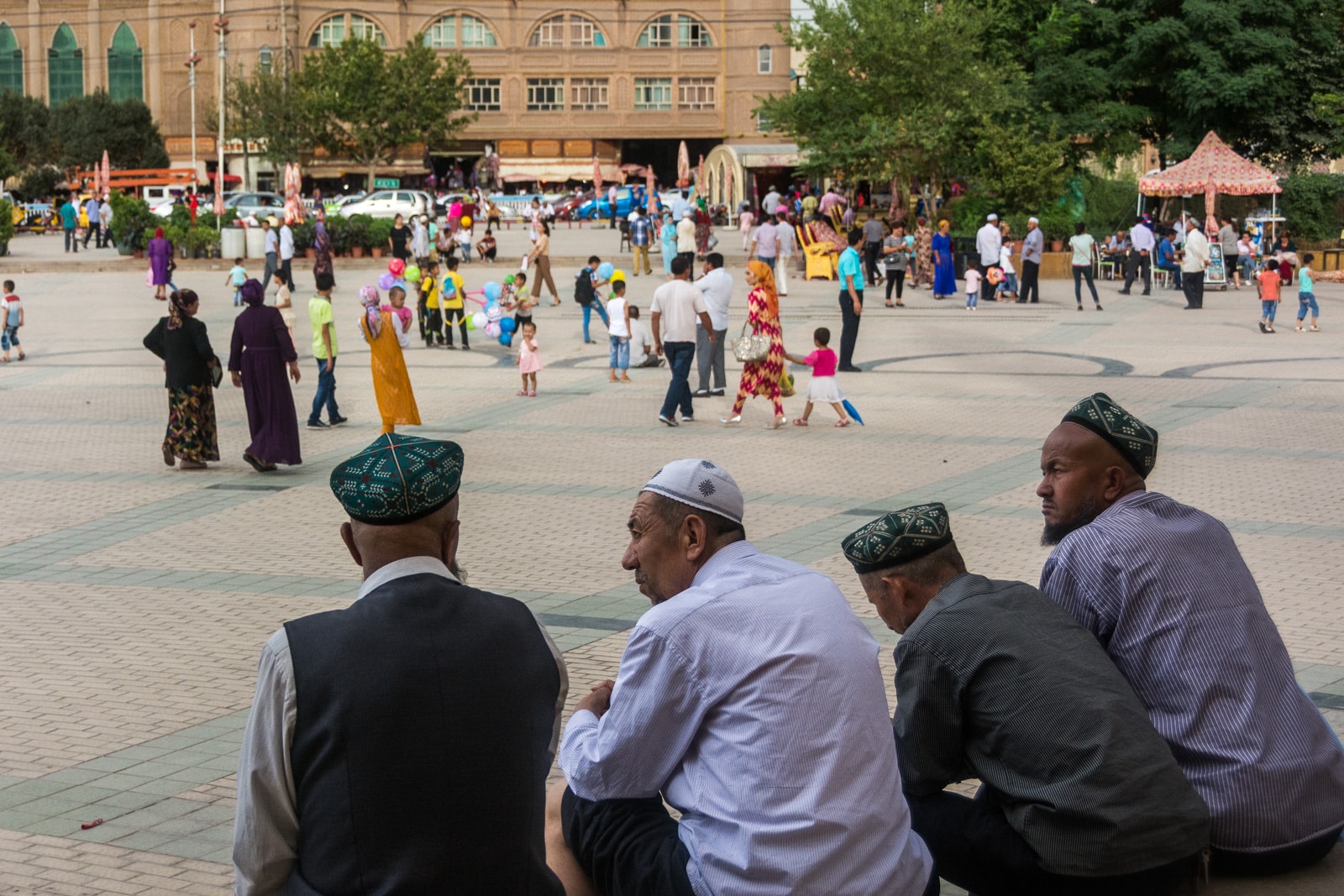
Uyghur men in Kashgar
Is Xinjiang safe to visit?
Since Xinjiang borders eight countries (Mongolia, Russia, Kazakhstan, Kyrgyzstan, Tajikistan, Afghanistan, Pakistan, and India), and four Chinese provinces (Inner Mongolia, Gansu, Qinghai and Tibet), it is a sensitive place. The region has a widespread governmental surveillance system, and many areas are restricted or completely forbidden to visit. There are often many travel regulations for foreigners in parts of Xinjiang.
However, for travelers Xinjiang is generally a safe place to visit. You can travel much of the region. The main issue for foreigners is that many hotels do not accept foreign guests, so you may encounter problems if traveling independently in Xinjiang.
Also read: How to hide computer files for border crossings
12 best places to visit in Xinjiang, China

Central Urumqi
1. Urumqi
Xinjiang’s capital, Urumqi, qualifies as a mega city with its 3,5 million people and modern skyscrapers. It’s one of the most remote cities on the planet, and the farthest city from any ocean coast according to the Guinness World Records. It’s very close to the (claimed) geographic center of Asia.
Urumqi is one of those modern cities that lacks ancient history or any kind of “old town”. Predominantly designed in Han Chinese style, there aren’t too many places of interest in it. Sounds a bit disappointing for some people, but if it’s the starting point of your Xinjiang journey, it would be a mistake to escape without exploring it first! Take a walk around its streets and parks to “feel” the local atmosphere and get your first impression of Xinjiang.
Things to do in Urumqi, China
For specific places to visit in Urumqi, I recommend:
- Xinjiang Autonomous Region Museum – Offers a governmental version of the history of the region and the Silk Road.
- Geographic Center of Asia – Monument some 20 km southwest of the city, ideal for geography lovers.
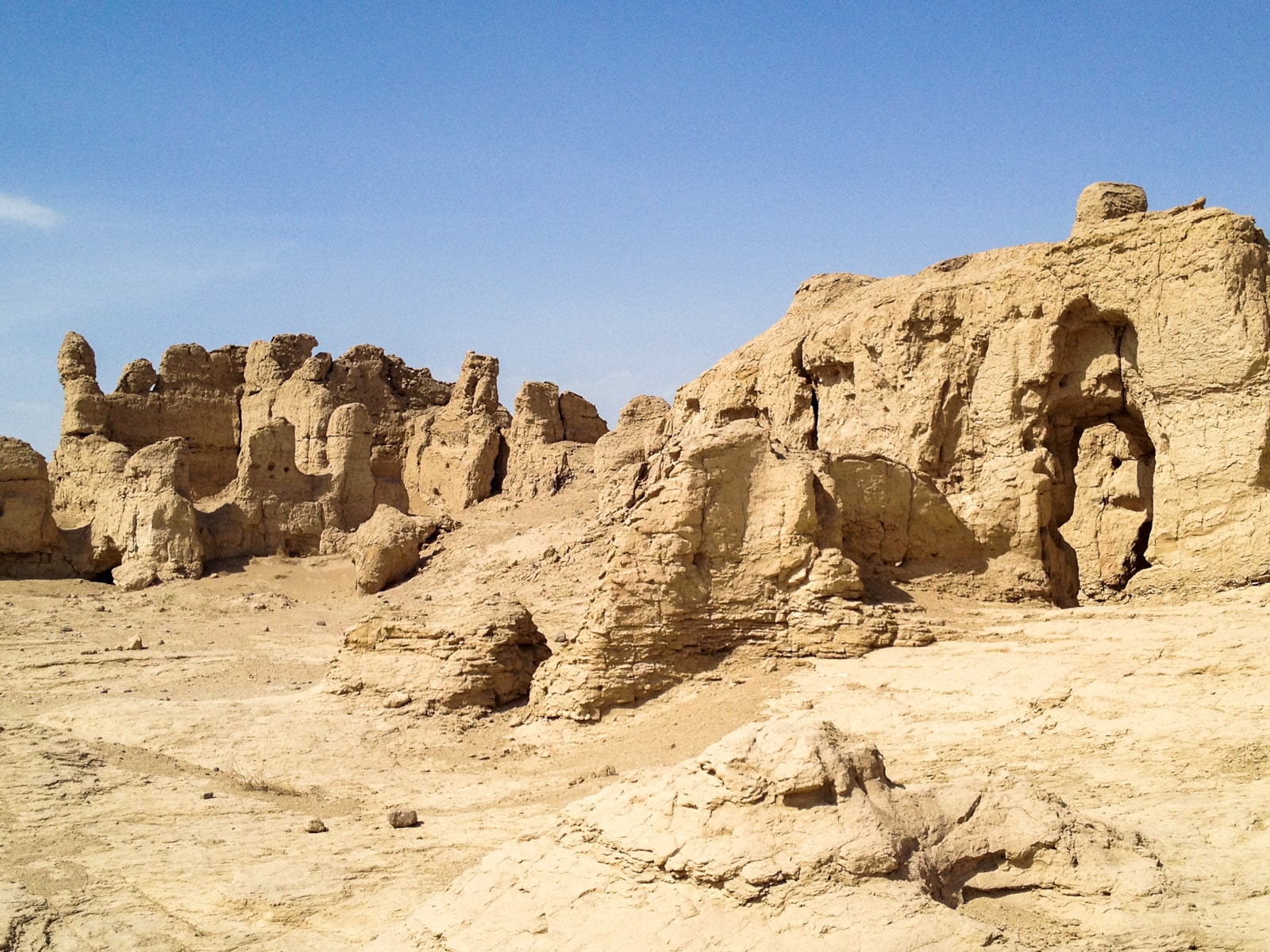
Jiaohe city ruins near Turpan
2. Turpan
Turpan is one of Xinjiang’s jewels, a predominantly Uyghur place with ancient history, unique local culture and specific geographical value. Turpan is one of the lowest cities not only in Xinjiang, but all of Asia. Located just beside the lowest point in Xinjiang—the Turpan Depression (157 m below sea level)—for geography lovers it’s worth visiting.
From ancient times, Turpan has been home to many civilizations, peoples, and kingdoms. Around the city you’ll see vineyards everywhere; Turpan is the City of Grapes, a fairy tale from the ancient past that still exists today.
Things to do in Turpan, China
- Yarkhoto (Jiaohe) ruins: Magnificent remains of a city. It existed for more than 3 millenia, but now rests in silence, blown by the desert winds.
- Karakhoja (Gaochang): Another once glorious, now abandoned city located further east of Turpan.
- Karez Wells: A unique water supply system located not far from the center of Turpan.
- Emin Minaret: Turpan’s main landmark, a splendid jewel from the 18th century.
Best places to stay in Turpan for foreigners
- Budget: Dap Youth Hostel accepts foreign guests, and has a gorgeous courtyard shaded by vines in summer. Its staff are friendly, and it’s within walking distance of restaurants and other necessities. What more could you need? Book your stay at Dap Youth Hostel.
- Mid-range: Silk Road Lodges is a small guesthouse on the outskirts of Turpan, in a quiet farm area. Its staff speak English, and guests can enjoy local food on a terrace overlooking the fields of grapes Turpan is so famous for. Check prices of Silk Road Lodges.

Night bazaar in Kashgar
3. Kashgar
Let’s jump to the far west of Xinjiang. Here, on an important crossroads of the famous Silk Road routes, another gorgeous city was established. This is Kashgar, a remote Uyghur settlement surrounded by both desert and some of the highest mountains on the Earth.
Like Turpan, Kashgar is a city with millennia of history. Although there are no ancient ghostly remains, culturally speaking, Kashgar has even more to offer.
Things to do in Kashgar, China
- Visit Kashgar’s Old Town: Although this is not the original “old town”, but a replica established on a new place—the original one was destroyed for this purpose—it was made to create a unique cultural atmosphere. This might disappoint you, but consider how often settlements moving from one place to another has happened in our human history.
- Afaq Khoja Mausoleum: A splendid masterpiece of Uyghur traditional architecture and design. Don’t skip it!
- Tomb of Yusuf Khas Hajib: Again an Islamic place of peace, taking you back to another era.
- Visit the colorful Kashgar Grand Bazaar: One of the most attractive experiences in Kashgar. Here is the best place to dive into the daily life of the local Uyghurs, sample local food, and buy souvenirs.
Best places to stay for foreigners in Kashgar
- Budget: Kashgar Pamir Youth Hostel takes foreign guests. It’s smack in the middle of the new/old town, close to the main Id Kah mosque. Check the prices of beds.

Karakul Lake near Tashkurgan
4. Tashkurgan
Have you heard about the famous Karakoram Highway, passing through Khunjerab, the highest border crossing on Earth? This heavenly road starts from Kashgar, crosses the Pamir and Karakoram mountains, then runs between the Himalaya and Hindukush mountains, the highest mountains on our planet. It finally descends to the Indus River valley in Pakistan.
Read: 5 serious dangers of travel in Pakistan
Tashkurgan is a picturesque highland town, and the last on the Karakoram Highway’s Xinjiang section. Tashkurgan is a small town, located in 3100 m altitude near the borders of Pakistan, Afghanistan and Tajikistan, where the Pamir meets the Karakoram Mountains. This is the westernmost town in China, and the main settlement of local Pamiri Tajiks, an ethnic group related to the people of Tajikistan.
Things to do around Tashkurgan
Not far from Tashkurgan, you can enjoy some of our planet’s most fantastic mountain views: the highest peaks of the Pamir Mountains, Kongur Tagh and Muztagh Ata. Both are more than 7,500 m high. You’ll be admiring them from 3500 m—they’ll be 4 km above you! Don’t miss a stop at the stunning Karakul Lake, where Muztagh Ata reflects in its waters.
Places to stay in Tashkurgan for foreigners
- Mid-range: Crown Inn Tashkurgan is an average hotel, but its friendly English-speaking staff make up for it. A rarity in this region! Check prices for Crown Inn Tashkurgan.
Can you visit the Karakoram Highway from Tashkurgan?
Currently, the Karakoram Highway in Xinjiang beyond Tashkurgan is not free for foreigners to visit; you must join a travel company which will obtain the necessary permits. Yes, it limits your freedom, but a journey to this fantastic road is absolutely worth it!
One exception is for travelers who have a visa for Pakistan; they do not need to pay for a tour, and can travel to the border by bus, hired car, or private vehicle if they have paid for the required local accompanying guide.
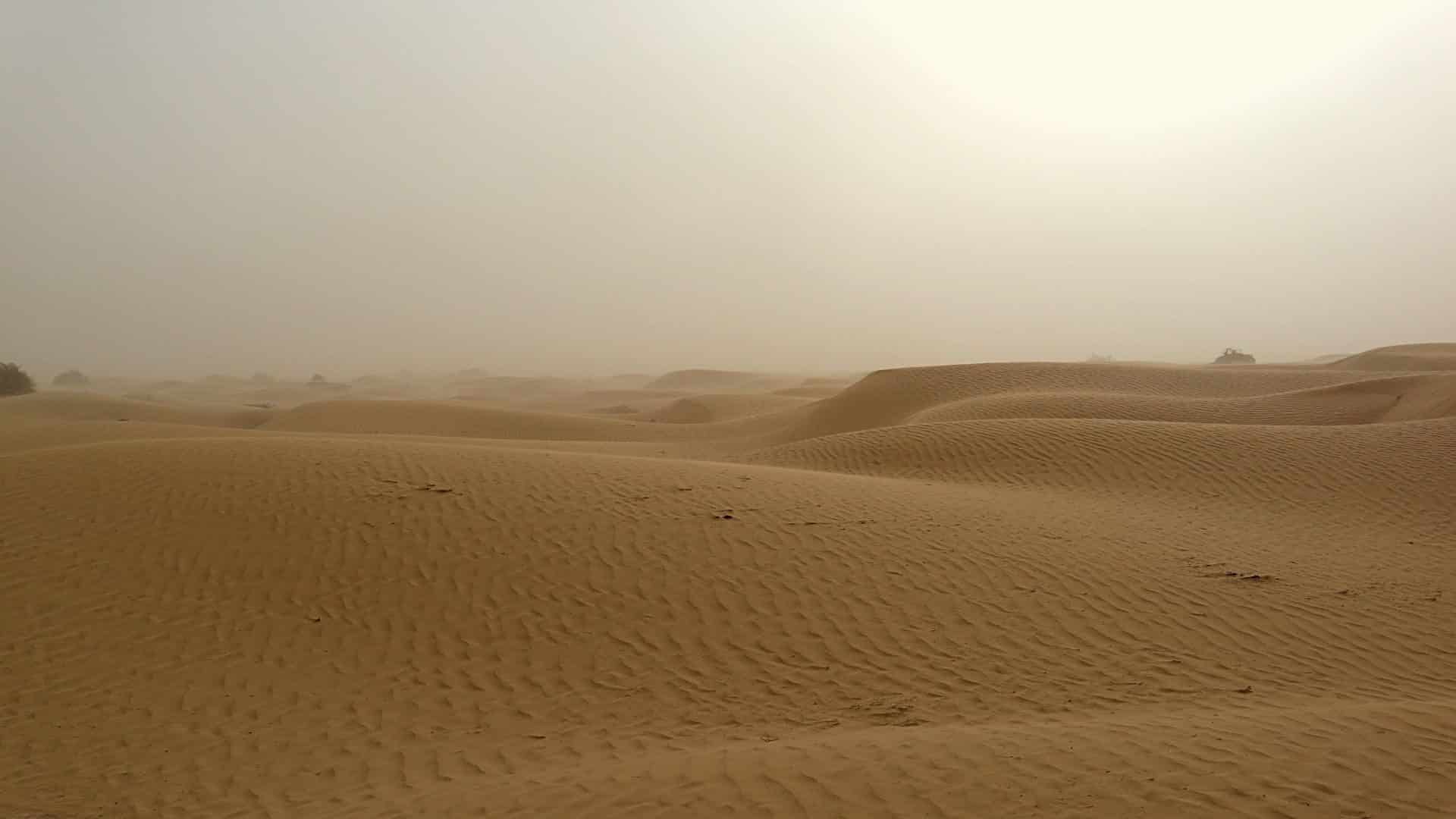
A storm in Taklamakan Desert
5. Taklamakan Desert
Open the satellite map image of Xinjiang. Can you see the yellowish eye-shaped spot surrounded by mountains in the south? That’s Taklamakan, one of the largest sandy deserts on the Earth.
Taklamakan is a harsh place. Its name literally means “a place that you come in, but never go out”. With its large size, it is one of the natural landmarks of Xinjiang that can’t be missed, however visiting Taklamakan isn’t so easy.
How to visit the Taklamakan Desert
You can “touch” the desert at its edge from several points, of which the most popular is the so-called Makit N39 (麦盖提N39), where the 39th north latitude crosses into the sands. Other entry points are Karsu and Turdi Aji Agricultural Garden, both not far from Kargilik (Yecheng), Moyu, Munadun, Cele and Yutian near Khotan, and Serik Buyang village near Qiemo. Many of these spots offer camel rides, ATV and other desert attractions, and an opportunity to walk on the dunes.
But if you want to see the real nature of Taklamakan, you have to cross it. There are two roads crossing the desert: from Aksu to Khotan, and from Luntai to Niya and Qiemo (it branches into two roads from an oasis in the middle of the desert, called Tazhong). You can do it by rental car with a driver, or cycle across independently. But again, don’t forget the name of the desert, and don’t stray too far from roads or other shelters. Without proper equipment, experience, and preparation it can be deadly!
6. Khotan
South of Taklamakan, the edges of the desert are surrounded by a ring of oases, once a cradle of many local kingdoms and cultures. One of them is Khotan, a city with old history and Uyghur traditions.
Known as the “Jade City”, Khotan is more remote and less touristy than Kashgar. Here is one of the best places in Xinjiang to experience local Uyghur life and culture. No need to go to a special “old town” or museum, Khotan’s old city is alive today.
Things to do in Khotan, China
- Khotan Museum: Starting guide to the history and reality of the area… from a governmental perspective, of course.
- Khotan Bazaar: Similar to Kashgar’s bazaar, this one takes you to another world where old traditions are still alive.
- Visit White Jade River: People go to the river to search for jade remains.
- Tomb of Imam Asim: Located on the edge of Taklamakan Desert.
- Day trip to the ruins of Melikawat: Mysterious remains of an unknown city, possibly the capital of the most ancient kingdom in this area.
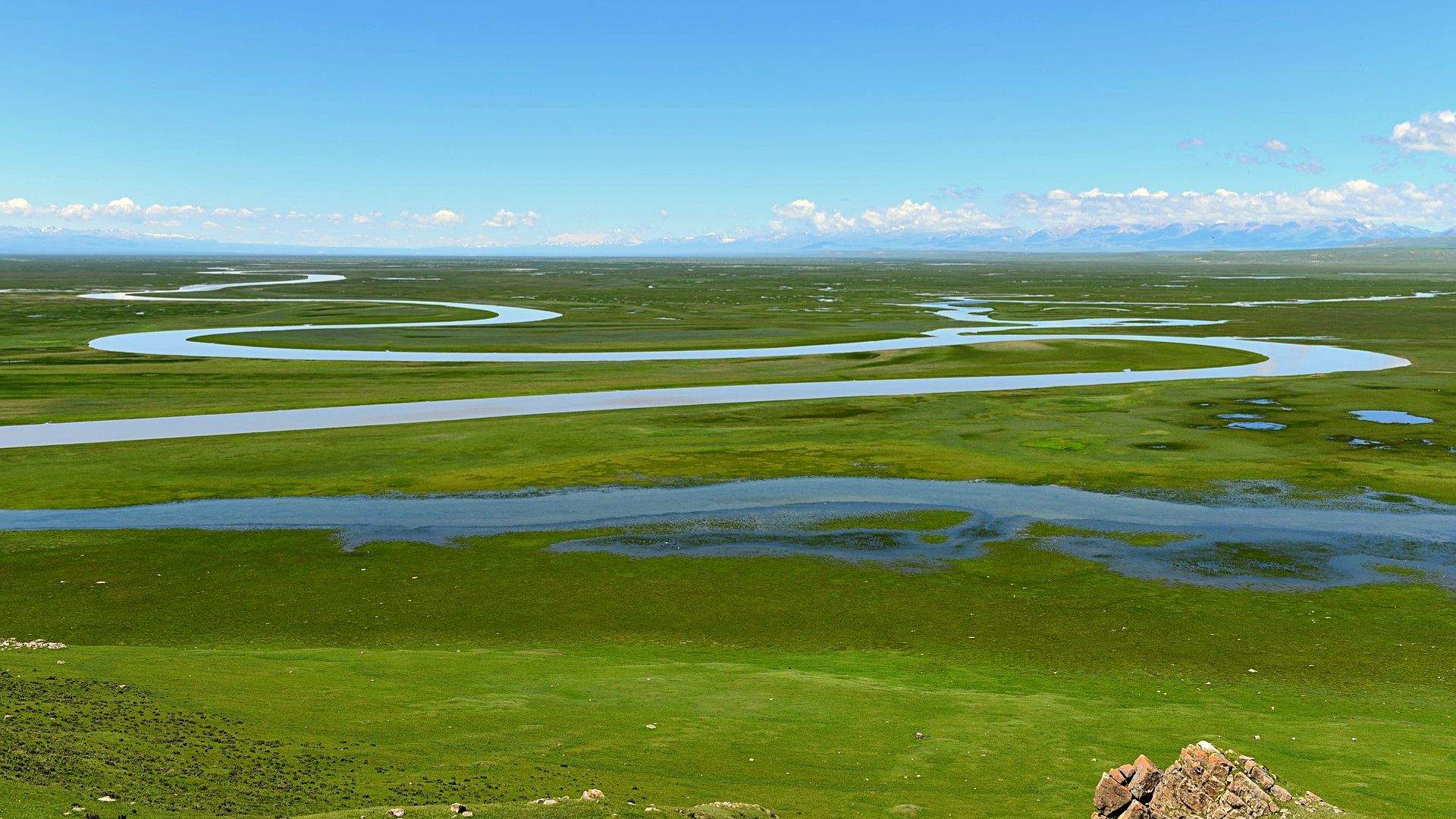
River through the grasslands of Bayin Buluk, along the Duku Highway
7. Duku Highway
Let’s cross from the southern to the northern part of Xinjiang, passing through one of the most beautiful mountain ranges on earth: Tianshan. And let’s do it via the Duku Highway.
Duku Highway is one of the most “heavenly roads” on our planet. More than 500 km long, it connects Kuqa (Kuche) in the south to the city of Dushanzi in the north—hence the name of this highway, taken from the first syllables of these cities. On its course, it passes through so many different landscapes and points of interest, all of them stunningly beautiful that I simply couldn’t choose just one destination to visit.
Starting from the south, you’ll travel through dry desert canyons with amazing rock formations. One of them is particularly significant: the Mysterious Grand Canyons of Tianshan, reminiscent of Antelope Canyon in the United States.
The road then ascends and the landscape becomes green as you pass by two alpine lakes. The next view is a vast grassland plateau dotted with Mongolian yurts, called Bayin Buluk.
A mix of alpine coniferous forests, grasslands, deep valleys and more mountain summits follows. Finally, the highway descends through another majestic alpine canyon to the northern Dzhungarian Plain of Xinjiang.
Where to stay along the Duku Highway
Foreigners are not allowed to sleep in hotels in some sections of the road. However, it’s no problem to spend the night in local yurts. Camping in your own tent is also permitted.
Transportation on the Duku Highway
There is no public transport on the Duku Highway. To travel the highway, you can hire a car with a driver, or join a tour from Urumqi. Only official tour companies can arrange a special permit to sleep in local hotels. Despite the inconvenience, I assure you traveling on the Duku Highway is worth the hassle.
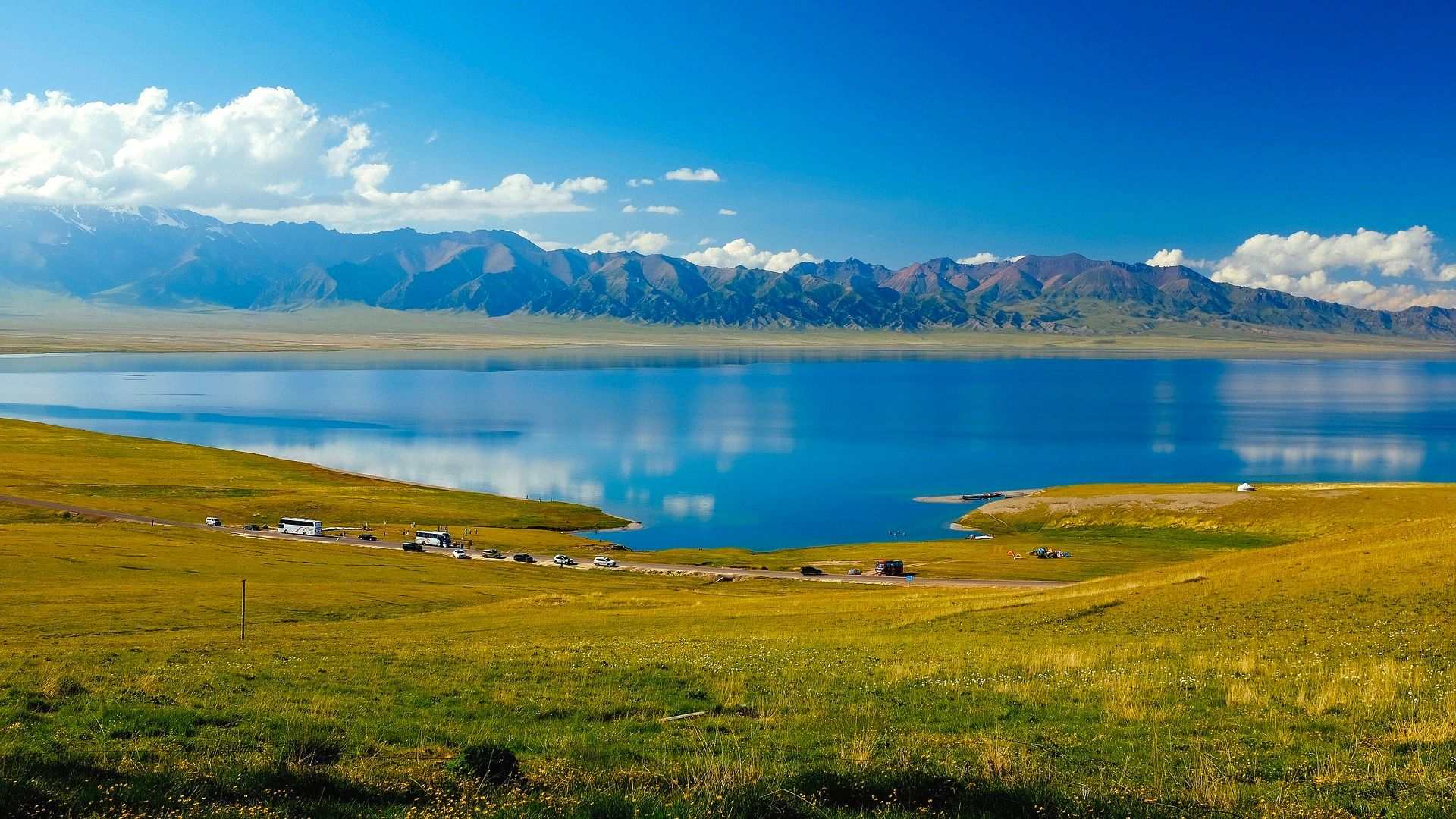
Sayram Lake
8. Sayram Lake
The Tianshan is a stunning mountain range. Alpine peaks—some of which reach 7000 m in altitude—glaciers, and grasslands and alpine forests on the lower regions make Tianshan a fantastic region to explore. Add to this a beautiful lake in the grasslands, with nomadic yurts surrounded by herds of sheep and yaks along its coasts.
There is one such lake: Sayram Lake, one of the most beautiful in Asia.
Sayram Lake is located near the Kazakhstan border, in Yili county of Xinjiang. It’s called “the easternmost teardrop of the Atlantic” as it’s the easternmost point of the Atlantic Ocean’s climatic influence in Eurasia.
The lake is easy to access by the main road that proceeds to Kazakhstan through Khorgos Border Pass. Due to the lake’s close proximity to the border, regulation change often, and foreigners may be required to obtain a travel permit to visit. Check for the latest updates before traveling there.

Heavenly Lake
9. Bogda Shan mountains
Tianshan is a long mountain range, stretching from Uzbekistan in the west to the easternmost parts of Xinjiang near the Mongolian border. All of its branches are stunning, but one particularly magnificent stretch stands between the plains of Urumqi and Turpan: Bogda Shan, one of the easternmost sub-ranges of the Tianshan mountains.
Its highest peak is Mt. Bogda (5445 m), a fantastic glacial peak rising over deep alpine valleys blanketed with grasslands, forests and glaciers. Tianchi Lake (the “Heavenly Lake”) is a national park, and one of the most beautiful areas of Bogda Shan. It’s a bit touristy due to its proximity to Urumqi, but crowds don’t detract from its incredible beauty. If you like hiking, Bogda Shan also offers several excellent hiking trails through what can only be described as alpine paradise.
10. Hami
In the easternmost part of Xinjiang, not far from Mongolia and Gansu Province of China, is the jewel of Hami (Kumul), the easternmost city in Xinjiang.
Do you know that some of these cities are “fruit capitals”? Turpan is the city of grapes, Aksu is the city of apples (though there’s not much else to see there), and Kashgar is the city of pomegranates. Can you guess what Hami’s fruit is?
Its name is a giveaway: Hami is the city of hami melons. The name “hami melon” comes from this city.
Things to do in Hami
- Hami Kings Tomb: Built in the 19th century for King Bo Xier VII of Hami and some of his descendants.
- Hami Museum: Offers background about the history of the region.
- Ghost City: The most mysterious place near Hami… and probably in all of Xinjiang. Remember Yarkhoto and Gaochang near Turpan, and Melikawat near Khotan? These are ruins of ancient cities, where the abandoned buildings are gradually crumbling into sand. The Ghost City near Hami, however, is entirely natural but looks like manmade ruins.

Kanas Lake in autumn | “Golden Kanas Xinjiang” by findiver is licensed under CC BY 2.0
11. Kanas Lake
To the extreme north of Xinjiang is the border area of Kazakhstan, Russia, and Mongolia. The area is known as Altai, a wild mountain region marking the boundary between Central Asia and Siberia. Ice and snow cover the peaks, and endless forests blanket the valleys.
Some of the forests are mixed coniferous and deciduous. Coniferous trees are green all year round, while deciduous change with the seasons: soft with flowers in spring, lush green in summer, yellow and red in fall, and naked in winter.
Deep within these forests lies picturesque valley with a pale blue lake. Yurts with horses are scattered along its coasts. In fall, a mist covers its waters and the colorful forests around it. Smoke rises from the yurts and huts as herds of sheep quietly graze in the surrounding meadows. This is Kanas Lake.
Think of it not as one, but four destinations. Every season brings changes to the lake and the forest around it. No matter what season you visit, Kanas Lake and its surroundings are guaranteed to be breathtaking.
How to travel to Kanas Lake
To get to Kanas Lake, you have to travel to Buerqin by bus, by train or by plane.
From Buergin, it’s easiest to join a tour. It’s occasionally possible to visit independently, but considering it’s a border area, regulations are constantly changing and usually a permit is required.
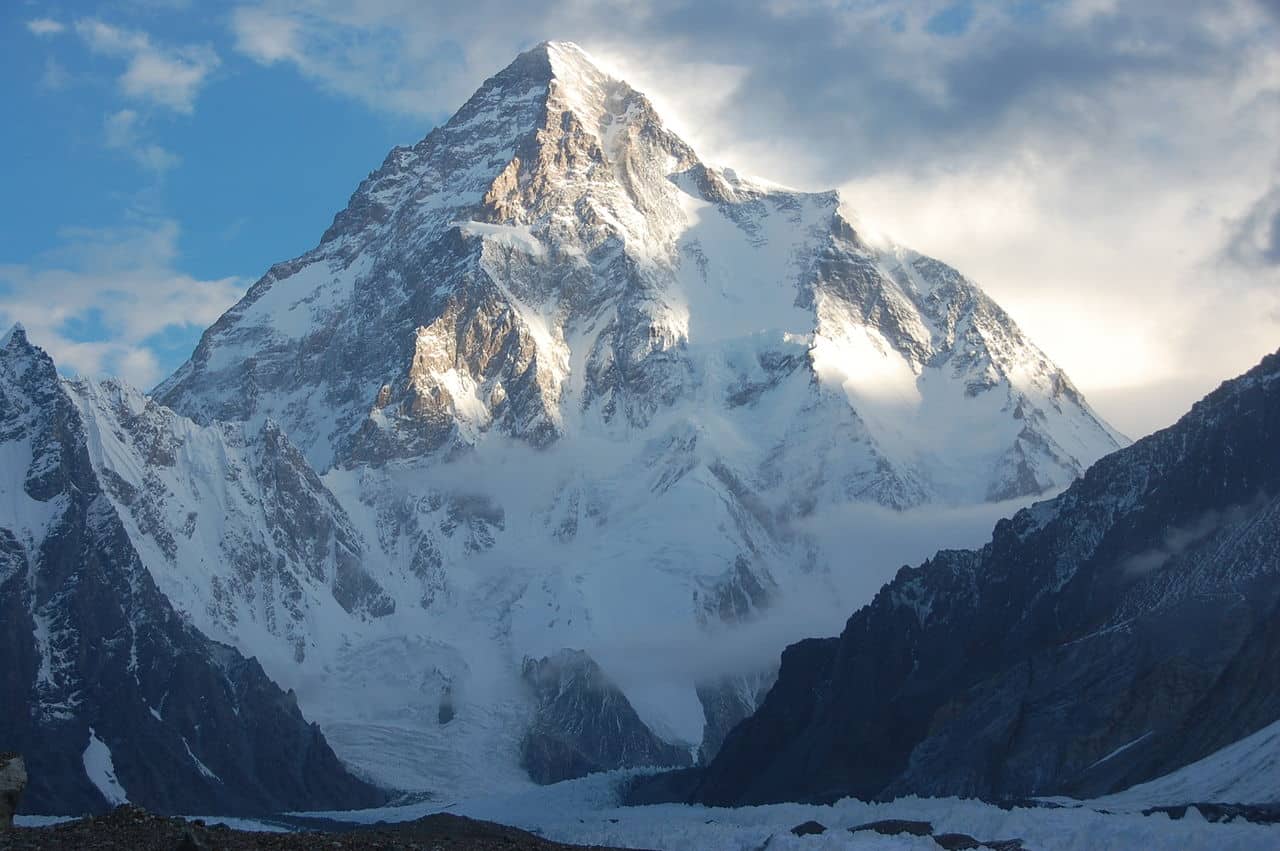
K2 at sunrise | “K2” by mariachily is licensed under CC 2.0 Generic
12. K2 mountain
Finally, let’s go to the extreme south of Xinjiang, to the border with Pakistan and the world’s second highest mountain range: the Karakoram. This is one of the most remote, wild, and difficult to access areas on our planet, and home to K2.
Famous K2, at 8611 m above sea level, is the second highest peak after Mount Everest.
Climbing K2 is not for everyone. Few people have managed to reach its summit, and many others have tried and died on its slopes. More plausible is trekking to its northern base camp on Xinjiang side. This trek takes you through the best of the Karakoram, to panoramic views of K2. You don’t need to climb the peak; you can enjoy its best views from the side.
Trekking to K2 in Xinjiang is an epic, but difficult journey. Although it is not as challenging as summiting, of course, it still requires good health and enough strength to walk at high altitudes for weeks.
Trekking to K2 from Xinjiang, China
To do the K2 trek in Xinjiang, you have to join an organized tour from Kashgar. There are companies that arrange such treks; they will arrange not only the necessary guide, equipment, transport and accommodation, but also the necessary travel permits.
There are many other places of interest in Xinjiang: lakes, valleys, deserts, mountains, cultural and historical spots, as well as countless trails and routes to explore. These 12 places are just a starting point. So consider including Xinjiang in your travel plans so you, too, can explore this incredible part of our planet!
Krasen – Journey Beyond the Horizon

Id Kah mosque in Kashgar
More resources for travel in Xinjiang
- The best VPN for travel and why you should use it – Absolutely necessary for accessing Google, social media, and other internet tools in China!
- Why I didn’t like traveling in Xinjiang, China
- How much it costs to go backpacking in Xinjiang
- Guide to the Kazakhstan-China border crossing at Khorgos
- Guide to the Pakistan-China border crossing at Khunjerab
- Caravanistan’s travel guide to Xinjiang

Local boys offering horse rides at Karakul Lake
Articles about current events in Xinjiang
- Human Rights Watch: More evidence of China’s horrific abuses in Xinjiang
- The Atlantic: China’s war on Uighur culture
- AP News: China cuts Uighur births with IUDs, abortion, sterilization
- Washington Post: What’s happening in Xinjiang is genocide

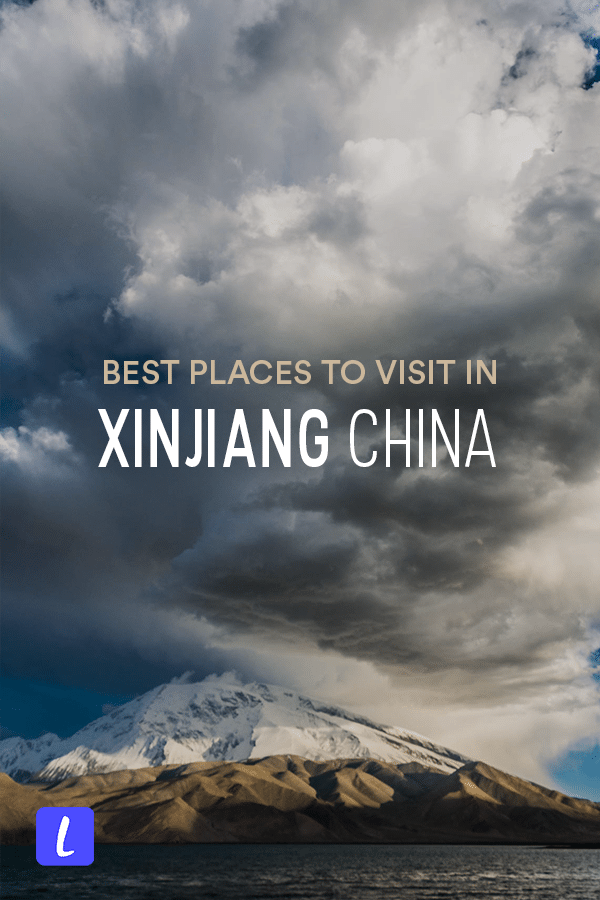
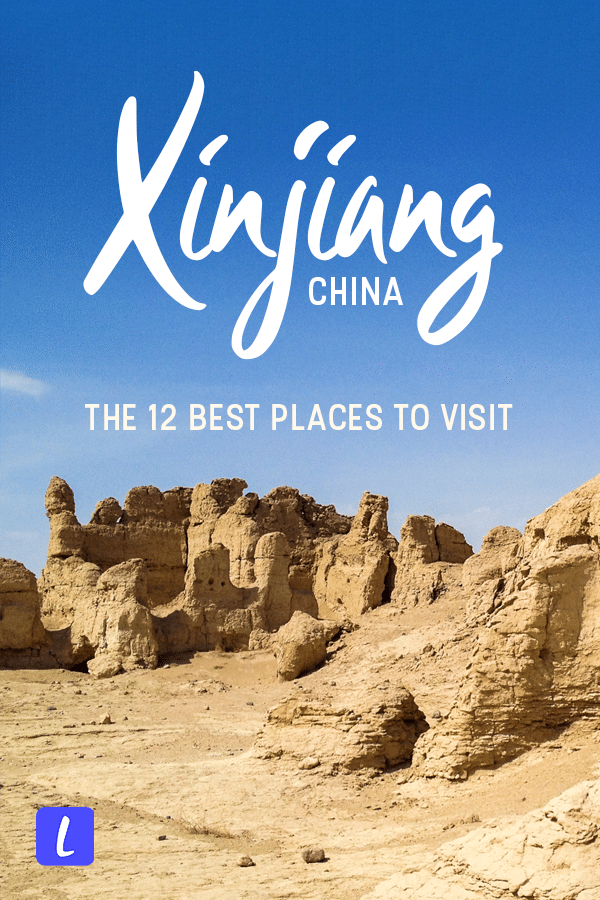


Thankyou for being one of the few completely honest bloggers to visit Xinjiang (as someone who lived there for a couple of years, and was there in 2016, I totally agree with your views).
You are welcome. Yes, although I was there for less than a month, spending the time for traveling around Xinjiang, I researched everything in detail, and I thank you for your confirmation too!
Thank you for the information
Robert
Exploring indica gummies and pre roll weed has been an enlightening trip instead of me. The quality and bouquet of these products are impressive, offering a calming and enjoyable experience. Whether I’m unwinding after a extensive period or seeking resourceful inspiration, hemp pre-rolls plan for a common choice that I can trust. The convenience of pre-rolls combined with the benefits of hemp flowers occasion them a go-to fitting instead of r ‘rest and mindfulness. I treasure the limelight to detail and purity of the products, enhancing my complete satisfaction. Decidedly recommend tough hemp flowers and pre-rolls for a holistic and fulfilling sagacity!
Mushroom products have become a habitual in my wellness thing! The natural ingredients put together me experience energized and focused without the jitters. From mushroom beverage to mushroom gummies , I darling the vulgar relish and the vigorousness benefits. Through fitted unsusceptible bear, weight abatement, and perceptual clarity. Enthusiastically propose!